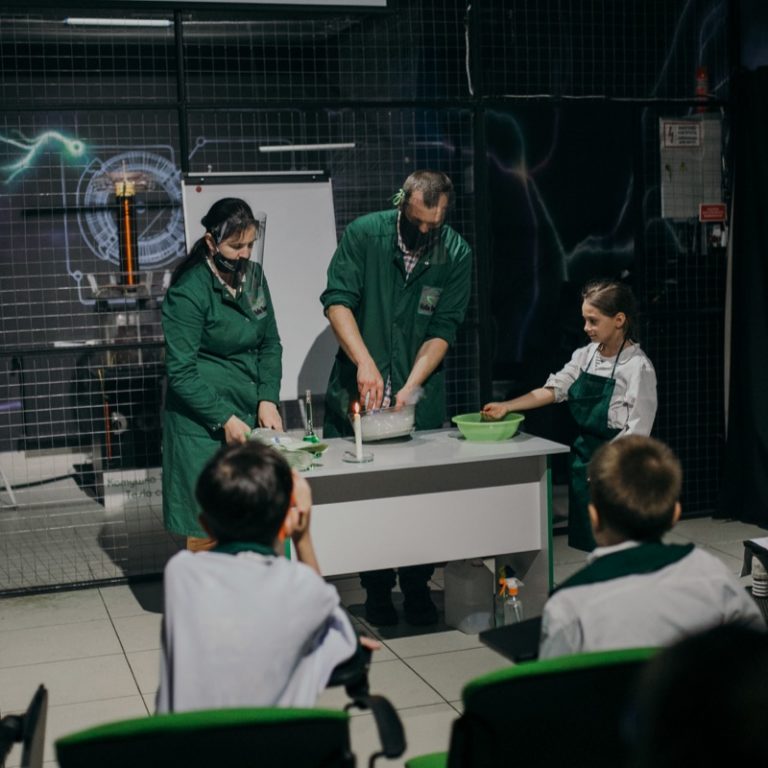The challenges of efficient energy use are presented at various levels, from energy consumption in an office to technological equipment of gas and pipeline companies. Figures that might seem low for a single household can mean heavy losses as well as environmental issues for companies that manage thousands of real estate objects or gas pipeline operators. Ukrainian businesses are creating solutions that can prevent and minimise this negative impact. V.A. Solutions Estonia has developed an online service for real estate energy consumption and efficient energy use monitoring, and the team at Zond, a research and production firm, has created a device that measures the heating value of gas.
Energy conservation and efficient energy use: these two terms are often confused, although there is a big difference between them. For instance, imagine you are a homeowner and you start getting upset by your gas bills. In terms of energy conservation, you put on a warm sweater and turn down the temperature on your boiler. Alternatively, if you are interested in efficient energy use, you figure out where your house loses most of its energy and decide whether you need to replace your windows, seal the front door to prevent drafts, wrap the whole house in a heat-insulation layer, or install heating controls on the radiators in order to let the least amount of heat into empty rooms. In order to reduce the bills in this way, you need to identify areas that generate the largest losses and invest money in order to cover them.
The latest energy-efficient solutions save resources and reduce expenses for the population, industries and the country. Efficient energy use is an important factor in the protection of the environment, as the reduction of energy consumption helps cut down on CO2 emissions that feed into global warming. Improving the energy efficiency of buildings and industrial processes reduces the energy use of humanity and helps minimise global emissions of greenhouse gases. Such solutions are produced in Ukraine as well.
Research and Production Company Zond and the company V.A. Solutions Estonia develop technologies for large-scale efficient energy use and economies across industrial, commercial, and infrastructure facilities. The online service Prengi by V.A. Solutions Estonia helps retail chains, big business centres, Ukrposhta (public postal service in Ukraine — tr.), and other clients to get a detailed image of their energy consumption and key expense points and, as a result, become more energy efficient and save money. In addition, developers at Research and Production Company Zond in Ivano-Frankivsk created a device that identifies the heating value of gas that gets to consumers.

Zond. Measuring the heating value of gas
People are used to seeing the volume of gas they have consumed in their bills, but warmth in your room or the speed of boiling water in your kettle are not determined by the amount of gas burnt. The basic consumption feature of gas as a product is its heating value, which is measured in energy units.
The heating value is the amount of heat that can be produced by a volume unit of gas when it is burned. It is the heating value that determines how much gas is needed to meet the consumer’s needs like boiling some water, heating a room, or heating thousands of flats.
Ukraine inherited from the Soviet Union the system of billing gas consumption that relies on its consumed or transported volume in cubic metres. This measurement method is technologically straightforward and can work only when there is no competition in the gas market. If we take a look at gas billing in other countries, we can see that in many places, BTU (British Thermal Unit) is used for billing. The signing of the Ukraine–European Union Association Agreement obliged the government to enforce a range of EU regulations concerning the functioning of the gas market and, in particular, to ensure the consumers’ rights to receive information about the consumed energy. To achieve this, it is necessary to initiate a billing system based on the calculation of the consumed or transported gas in energy units in the Ukrainian gas market.
The British Thermal Unit
The amount of heat required to raise the temperature of one pound of water by one degree FahrenheitIt is technologically more difficult to measure heating value due to the compressibility of gas. Developers at Research and Production Company Zond have created a device called GAS-Hі-Q that measures the heating value of gas and has a range of advantages compared to conventional measurement methods. It is more cost efficient and does not need to burn a sample of gas for measuring its heating value and allows you to quickly get results online.
Research and Production Company Zond LLC has been functioning since 1990 based at the department of nondestructive testing of Ivano-Frankivsk National Technical University of Oil and Gas. At first, the company developed diagnostic measurement devices for the oil and gas industry, but at some point it saturated the market with its equipment and switched to servicing and technical diagnosis.

Oleh Karpash, a scientist and a teacher at the university of oil and gas, was the founder and the director of Zond during its first 10 years. Today, the company is managed by his son Maksym Karpash, who has a D. Sc. in engineering and is the Vice Rector of Research of the university of oil and gas since 2017.
The idea of developing a device that could measure the heating value of gas appeared when the co-founders of Zond helped to develop mobile laboratories for quality assessment for the oil and gas industry.
— We had an idea to use our experience for the development of the mobile laboratories for quality control of
automotive fuel that was sold at filling stations. But then we thought that there was gas as well.
At the same time, the enterprises that deal with consuming up to tens of thousands or even hundreds of thousands cubic metres of gas per month are interested in such measurements because when the heating value fluctuates even just by a few per cent, it means heavy financial losses for them. That is why the team at Zond realised that they needed to get in touch with the enterprises, and they started their cooperation with the regional gas companies and Ukrtransgaz.
— Fifteen years ago, no one watched the price for energy resources. Today, it has become a sort of religion across many municipalities, as the utility bills are rather high.
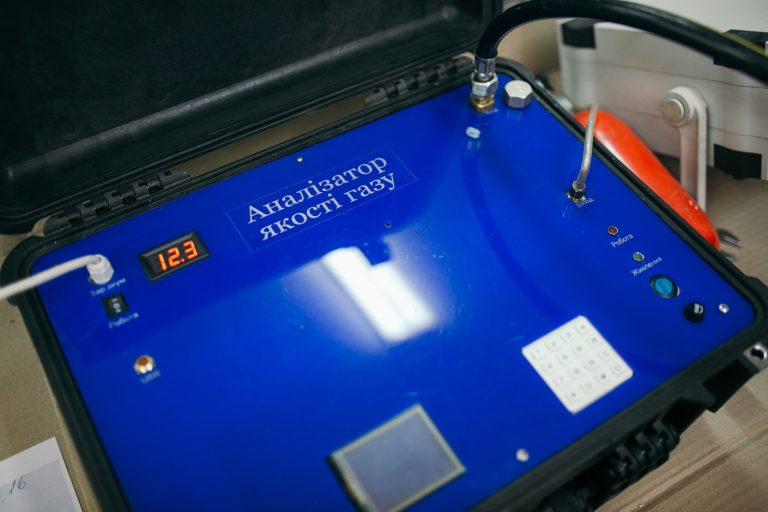
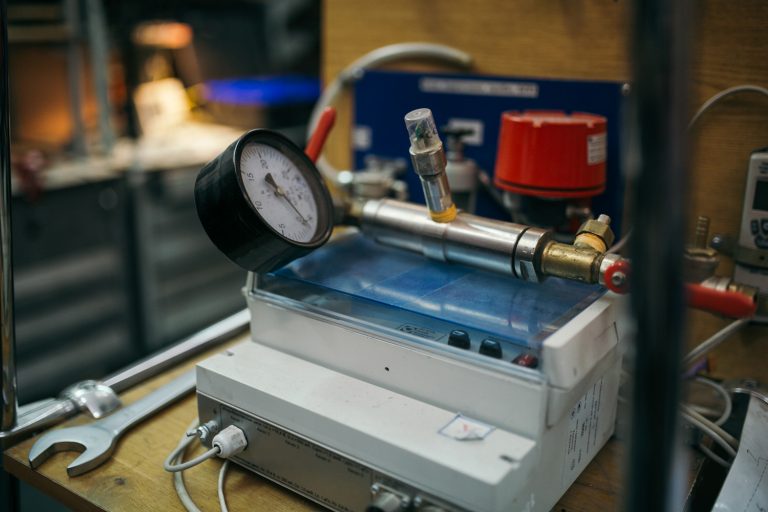
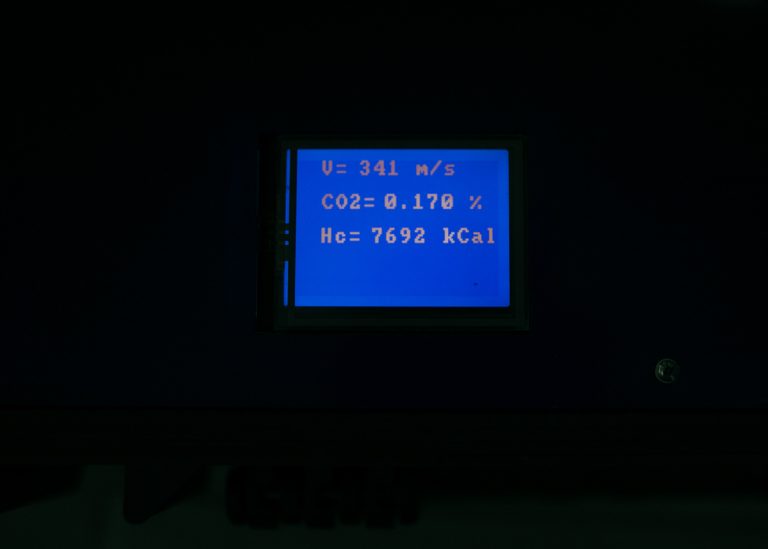
slideshow
GAS-Hі-Q
There are two groups of methods for measuring the heating value of gas. Calorimetric methods measure the amount of heat that is generated by the full gas flaring. These methods have a range of restrictions due to the compressibility of gas — they require heavy equipment and long-lasting testing; however, their results are considered to be a benchmark. The second group includes a calculation method, when the ratio of each component of gas is identified and the cumulative ratio of the heating value is determined by the reference value. It also requires specialized equipment and relatively expensive and extensive research. There is also a range of indirect measuring methods, and GAS-Hі-Q is one of them.
— The market needs to get the data on gas quality in a fast, precise, and mobile way. That is why we have developed such a device. We are not saying that we are unique — there are different groups of researchers; however, we hold a rather competitive position among them. The group of methods we follow is essentially cheaper than our competitors’.
Maksym Karpash says that the last updated version of the device has a distinct advantage: you can connect it for measuring the heating value of gas practically from any sampling point with different gas pressure values, be it the main gas pipeline, a gas distribution station, or a household. The device can work both in manual and semi-automatic modes. The user sets the frequency of collecting a sample, and the analyser carries out the measurement and records the data.
— You can take the device to gas instead of taking gas to the device. As a rule, there is a distance between them. And a chromatograph or a calorimeter are used only for laboratory research, only in the stabilised environment. It’s physically impossible to transport this equipment. That is why we came up with this idea, as there are lots of consumers and lots of questions.
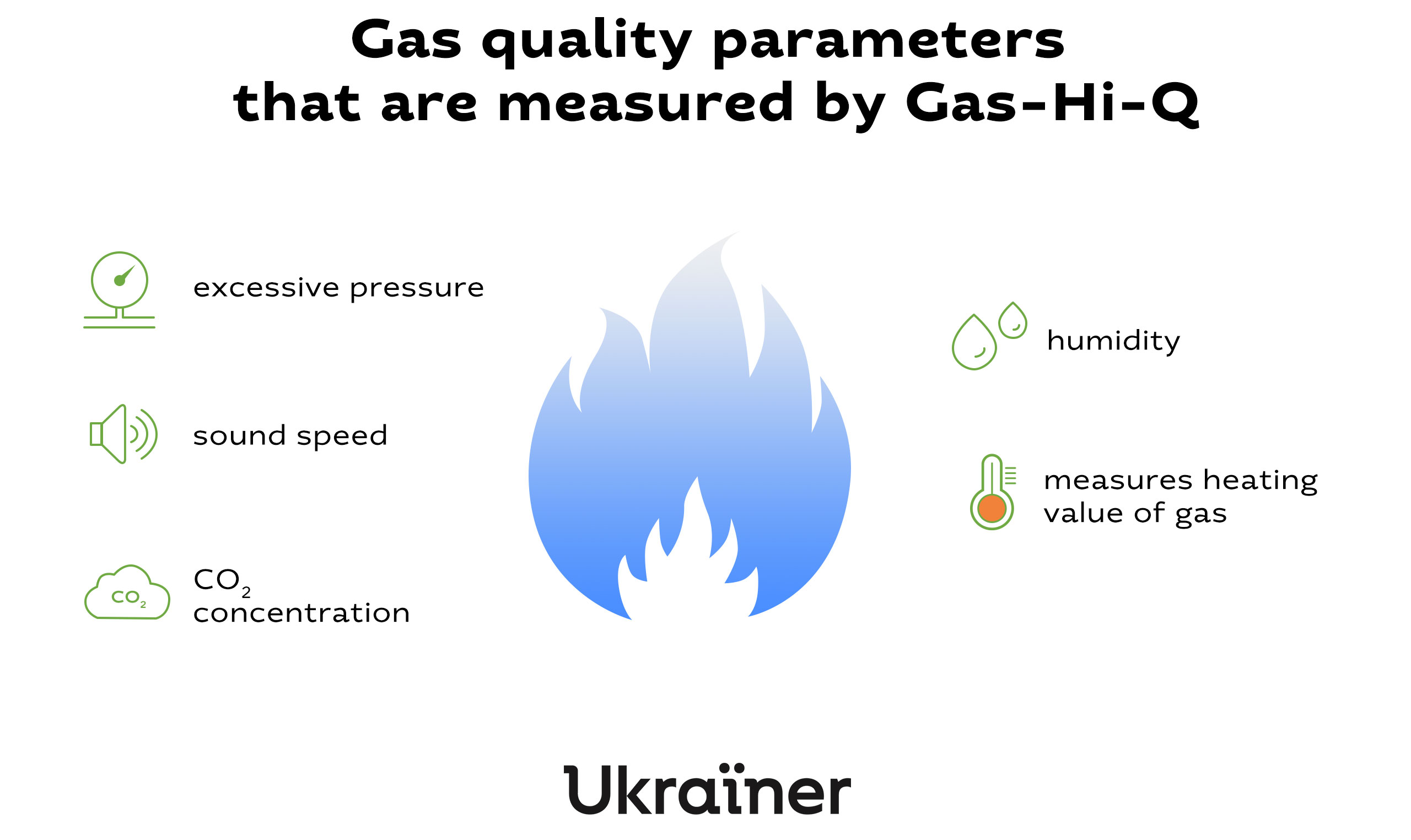
To assess the heating value of gas, GAS-Hі-Q, a device developed by Zond, measures a range of parameters: sound speed, concentration of carbon dioxide (CO2), excess pressure, and humidity. Then the acquired data is processed by artificial intelligence, identifying the heating value parameters.
Although heat value is the key parameter, other parameters also matter. For instance, humidity values allow you to identify the condensation point for certain conditions:
— Taking into account that the Ukrainian gas transportation system is rather outdated, we cannot properly dehydrate gas in the peak periods. And the so-called condensation point, the temperature in which the moisture in gas turns into condensation, is rather high. It can happen when the temperature drops down to -8℃, and sometimes when it is +3℃. And +3℃ in the pipe is quite normal in the winter. That is why we measure humidity.
The Zond team has already developed several generations of gas quality analysers. The device looks like a suitcase with a gas tank and measuring equipment inside. The analyser can be powered by a rechargeable battery or by the mains.
— Our latest versions have a sensor screen, but mechanically they remain the same. In terms of household use, it is enough to switch it on and follow on-screen instructions.
Maksym Karpash explains that the earliest versions of the device looked like a mobile laboratory. Today, it is just a suitcase. However, the developers plan to achieve more and make the next analysers even more compact, while still complying with all safety requirements.
— This is gas. It is explosive, and that is why we had to make all the parts so large in order to ensure maximum sealing to eliminate gas leaks.
The analyser is assembled in cooperation with the experts from Ivano-Frankivsk National Technical University of Oil and Gas. Some parts are manufactured on their own, while others (microprocessor-based hardware in particular) are ordered from abroad.
— If it is possible, we use parts that are produced in Ukraine.

Maksym Karpash explains how the device works by comparing it to petrol. Petrol can have different research octane numbers (RON): 92, 95, and 98. They (as well as the price for petrol) depend on the amount of energy that is emitted by burning the fuel in the engine. That is why 95 RON is more expensive than 92 RON. Maksym is convinced that we should pay for gas in the same way. However, we pay for the volume of gas, no matter how much energy we get.
— We understand that the higher the heating value, the more energy is produced. We do not feel this difference with gas, and that is why we are billed according to the consumed volume of gas. Imagine that you buy any petrol and sometimes get 80 RON, and sometimes 95 RON. For drivers, it is an essential difference.
Different engines are adjusted to different octane ratings, and likewise, most gas devices are designed for certain heating values. Continuous use of the wrong fuel increases the chance for improper functioning of the whole system.
To introduce such a device to the market, you need to get certification — in particular, metrological certification, which confirms the accuracy of measurements. The company Zond has won a grant within the project Climate Innovation Vouchers, organized by NGO Greencubator with the assistance of the European Bank for Reconstruction and Development. Thanks to this grant, the developers could conduct metrological testing and certify their device. Maksym Karpash mentions that they had been wasting time for several years because no one knew how to issue a document for a device with such nontypical features. In 2017, the aspects of certification became clear, and the Zond team applied for the grant.
— We used the grant money to pay for metrological testing in order to get a certificate of compliance assessment and also for marketing research to understand how our market has changed. We understand that we should not stick only to the Ukrainian market. There are many nearby markets that depend on gas and will keep on depending on it for a long time. And they will always face the issue of quality assessment.

Paying for energy, not volume
Since the end of 2015, Ukraine has stopped buying gas from the Russian Gazprom and started reverse-flow deliveries of gas from Europe. At the same time, the Ukrainian Parliament adopted the law “About the gas market”, and since 1 August 2020, the gas market started to work in Ukraine. Now the consumer can choose a vendor from hundreds of companies.
— Gas vendors will begin competing against each other. And the general image of the competition will be quite different if we pay according to energy value. We will make the gas market more transparent. Consumers will get real information about how much energy they have consumed.
The idea of developing GAS-Hі-Q is that people will be able to pay for the amount of energy actually consumed, not for the cubic metres of gas. Both households and large companies are interested in it.
— We pay for it (gas — ed.) a lot, but we do not know what it really is. And this is the major issue.
For companies like Ukrtransgaz, accurate data on the heating value of gas is helpful as they consume a lot of gas themselves — they are gas operators and have to correctly adjust the equipment. Maksym Karpash explains that the heating value of gas that is delivered to Ukraine is higher than the standard one (in Ukraine, the heating value of gas should be no lower than 31.8 mJ/m3 or 7600 kcal/m3 at standard conditions). Firstly, the equipment is not adjusted to this heat, and secondly, the value differs depending on the time and region, which reduces the efficiency of the system.
— If you are a large enterprise that produces heating energy, and you are told, for instance, that there are 8,200 kcal per cubic metre, however, it can actually be 9,000 or 7,800. The difference in price is big. And you will not know it and will not be able to check it, and there is a possibility that you will overpay. Consequently, this chain goes further. Not to mention, the gas transportation system is a sort of melting pot. It consists of a pipe system and underground storage facilities where gas from different vendors is blended. No one knows what happens there.
Likewise, the consumer might be interested in checking the heating value of gas. Eventually, the device can be used by housing cooperatives.
— If the consumer thinks that the gas is of improper quality, they appeal to the gas operator, who arrives at their place and conducts an analysis for a fee. This analysis costs about UAH 4,000 ($141). If the analysis shows that gas is really of lower quality, the operator reimburses the expenses spent on the analysis and recalculates the bill. But paying UAH 4,000 ($141) without any devices for checking… You will just be told, “We have measured it. Everything is good.” It is quite a realistic case.
For example, if a housing cooperative uses such a device, having the data they can tell the gas vendor, “I want to pay for the calorific value of gas”, and switch to that kind of billing. It is allowed by law, and there is a need for the tool that will help put it into action.
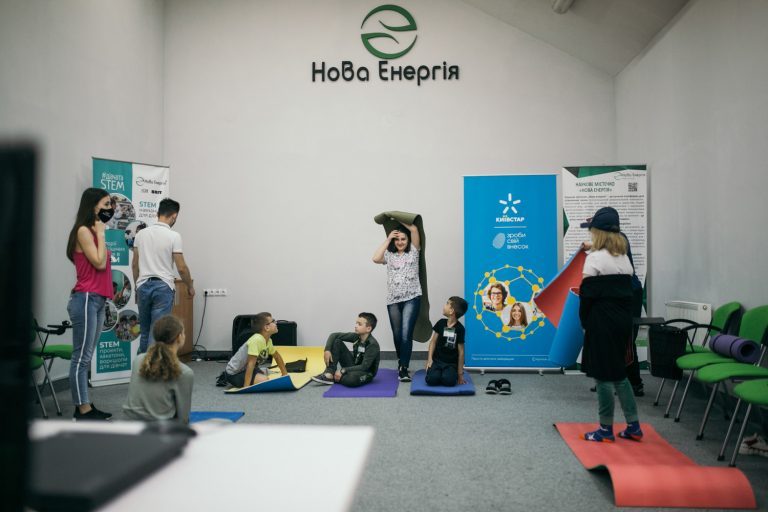

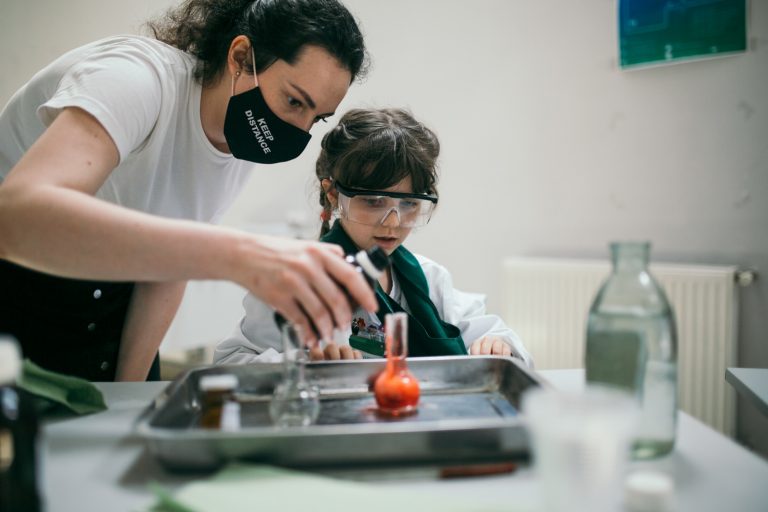
slideshow
The New Energy. Believing in science
In 2016, a group of scientists created a scientific community called The New Energy based at Ivano-Frankivsk National Technical University of Oil and Gas. First, it was an interactive museum, which eventually developed into an educational and training complex for children. The interactive exhibits demonstrate different physical phenomena. Also, visitors can interact with a 3D printer, augmented and virtual reality devices, and programmed robots. Besides excursions, the museum is a venue for workshops, scientific shows, and courses for children.
— We decided to start with children, explaining to them where energy comes from, how it is consumed, how it can be saved, how achievable it is to consume less energy with a regular standard of living and consequently save costs. However, children better understand more practical things than money.
The scientific community team consists of more than 30 workers, including teachers, postgraduates, and students of the university. The idea is that people who have experience in education and science pass their knowledge to children who are interested in such development.
— This scientific community is aimed at preparing children for serious science, and by playing, we give the children a chance to try themselves as real scientists in physics, robotics, architecture.
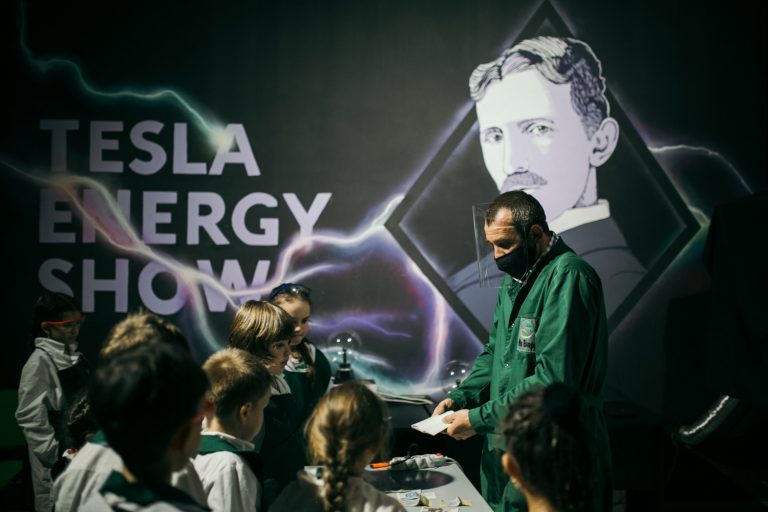

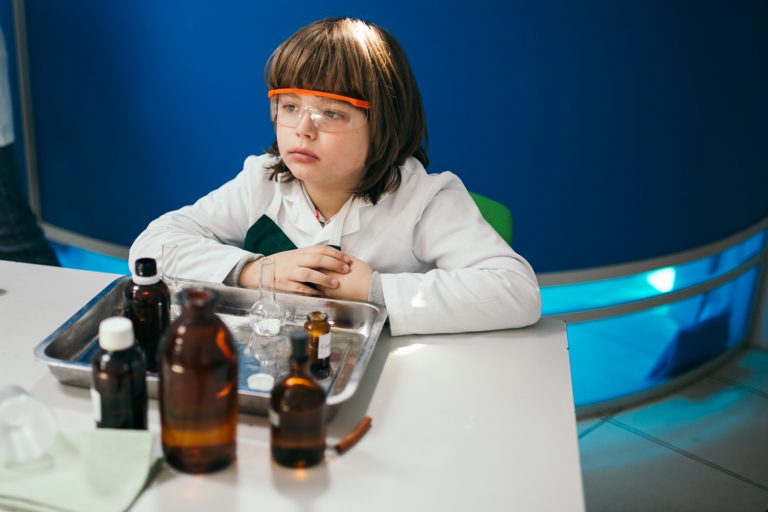
slideshow
Additionally, there is a consulting centre within the scientific community, which specialises in efficient energy use and energy conservation, where the university teachers conduct workshops and trainings.
— We are trying to teach children that they are part of a huge ecosystem, and even a small piece of paper affects the system. At our museum, you can see many examples of the right energy use: wind turbines, solar panels, collectors.
The New Energy team has chosen experiments that are safe enough to do with the children after six years, taking into account the school, and partially university, curriculum. In their opinion, when children try to repeat classic experiments with their own hands (instead of looking at images in a textbook or on slides), they will be able to understand the laws of nature more deeply.
— How will you get Ukrainian Elon Musk, Steve Jobs, whoever, if they do not go to the museum and do not believe in science? Knowledge is valuable only when it is combined with belief, interest, and will. When a child is looking at such things with their eyes wide open, he or she gets interested.

V.A. Solutions Estonia. Culture of energy consumption
Today, a significant part of energy consumption in Ukraine is shared among industrial facilities, offices, and dwellings. The inefficient energy use habits of industry giants with partially outdated electricity mains and without systematic control over energy sources, or offices and shopping malls where any worker or visitor can leave lights or water turned on, lead to constantly high expenses for those who are in charge of the real estate objects.
In 2015, Ukrainian company V.A. Solutions Estonia developed a complex online service for real estate maintenance — Prengi, which helps to manage all the processes of technical services within supermarket chains, big enterprises, housing facilities, and so on. In particular, the efficient energy use module of this online service allows for tracking and analysing energy cost for objects, and thus managing their energy efficiency.
The online service Prengi was initially developed for the Ukrainian company SHEN as a product for managing real estate objects and their maintenance (FMS — facility management system). The major aim was to automate business processes for efficient real estate services.
— The kind of building does not matter: be it an office, a shopping centre, a factory, or a housing estate. All of them need continuous maintenance in order not to lose their value and not to get ruined. It is a huge array of activities, including cleaning, security, and renovations.

According to the CEO of V.A. Solutions Estonia, Bohdan Baikovskyi, the cost of using the service Prengi is lower than of its foreign analogues, which makes it more affordable in the Ukrainian market.
— The name Prengi consists of two words: process and engine. It is a designer of business processes, based on how the working processes of any company are created. It is not important whether it is real estate management or logistics, whatever. Among our clients there are small companies, and there are ones like Ukrposhta, with tens of thousands employees.
Today, besides Ukrposhta and SHEN, the service Prengi is used by large companies such as the supermarket chain
Novus, shopping malls Aladdin and Piramida, among others.
However, the development of the efficient energy use module of Prengi started from the cooperation with Ukrposhta.
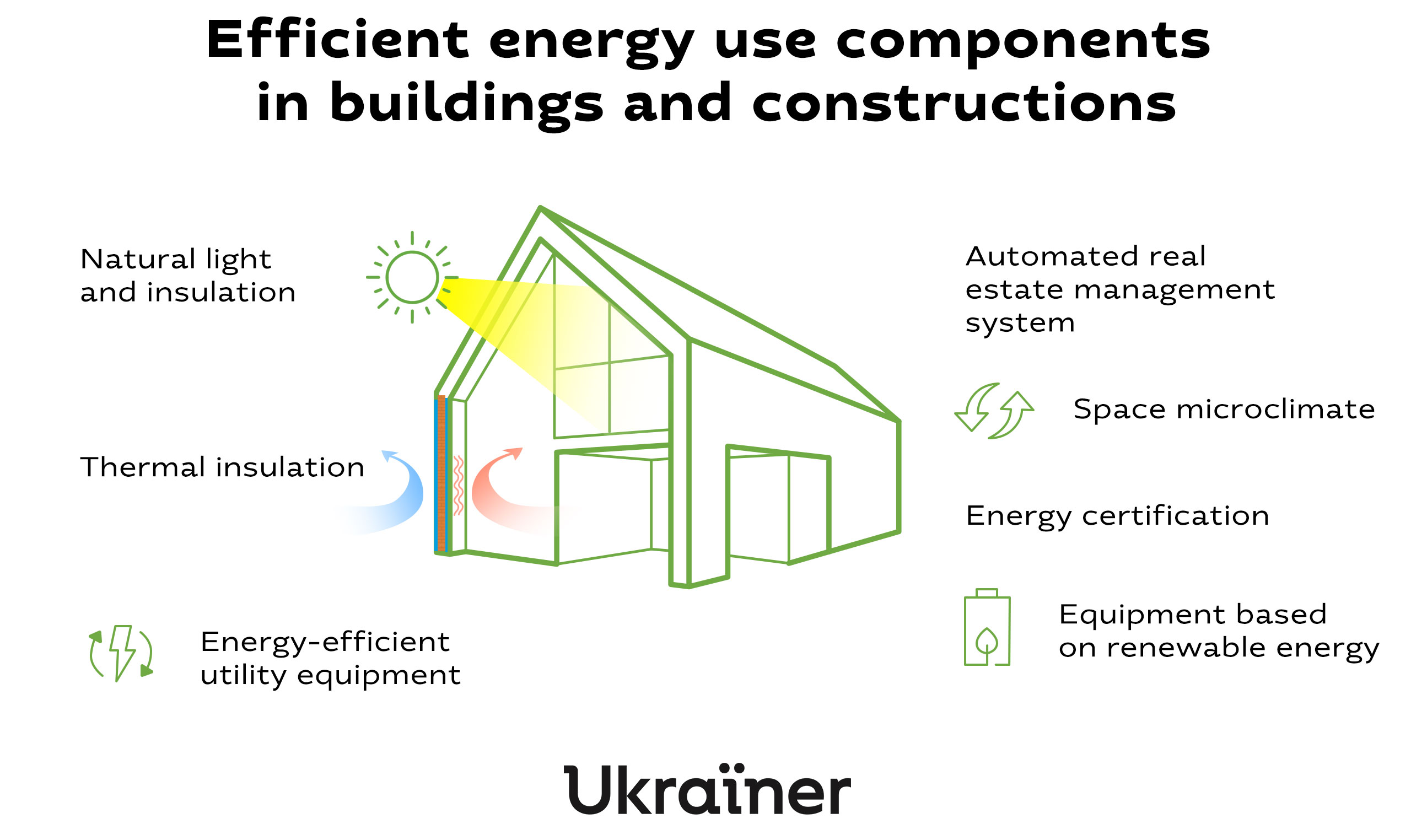
The module’s major functions include automated control over the metres’ readings (gas, electricity, water), expense analysis, and recommendations on how they can be optimised. According to Bohdan Baiovskyi, most of these systems operate without having a full facility certificate, which is critical in terms of efficient energy use solutions.
— There are many energy management systems in the market, but they all are too narrow-focused. For instance, there is an object where the system collects readings from all metres and allows for analysing this data. But if we want to invest in efficient energy use, for example, to replace the windows, we cannot see the facility certificate of an object, what it looks like, how many times it has been renovated, how many windows it has. Our system allows for updating this data and managing the object distantly. What is more, it can identify whether the window replacement has been efficient, whether the expenses have been reduced, and if not, change something else, for example, the boiler.
— Why did we start with the certification of facilities? Because we need to create a database for each object: its parameters, what kind of equipment is installed there. If there has been an energy audit, we need its data as well to better understand what kind of building it is.

Cooperation with Ukrposhta
It was the management of Ukrposhta that pushed forward the idea to develop the efficient energy use module of Prengi. They wanted to keep the records of the postal service real estate with tens of thousands of departments using a single online service and selected Prengi for this. Since in most of the departments, the rates of energy consumption have been over the limit for a long time, Ukrposhta requested a service for electricity monitoring that would optimise the company’s expenses.
Ukrposhta property manager Ihor Morma says that today, every department regularly updates the metre readings with the online system Prengi, which analyses them and identifies the offices where energy consumption has gone over the limit.
The company V.A. Solutions Estonia received a grant within the project Climate Innovation Vouchers, organised by NGO Greencubator with assistance from the European Bank for Reconstruction and Development, and used it for energy management expert evaluation. Bohdan Baiovskyi mentions that at the beginning, his team did not have any experience in project implementation in the area of energy management. That is why meeting NGO Greencubator and cooperating with them helped the developers to quickly gain insight into this field:
— They familiarised us with the area of energy monitoring, energy audit, and energy management in general. We could not implement such a huge block as energy management without them. It took five months for the idea to be implemented, which is pretty fast.
The process of taking metre readings at the real estate objects is still much dependent on the human factor, as very often, the readings are taken manually and written down from a large number of metres, which can lead to errors in data. Prengi identifies possible errors and notifies the service users about that.
— The system will warn that the metre readings are deviating from the norm and show that the user has possibly entered the wrong data. At Ukrposhta, the department managers are responsible for entering the data. Metre readings are immediately integrated into our analytical data, and the person who is responsible for the first group of objects gets a message saying that it is possible that a certain object has abnormal energy consumption.

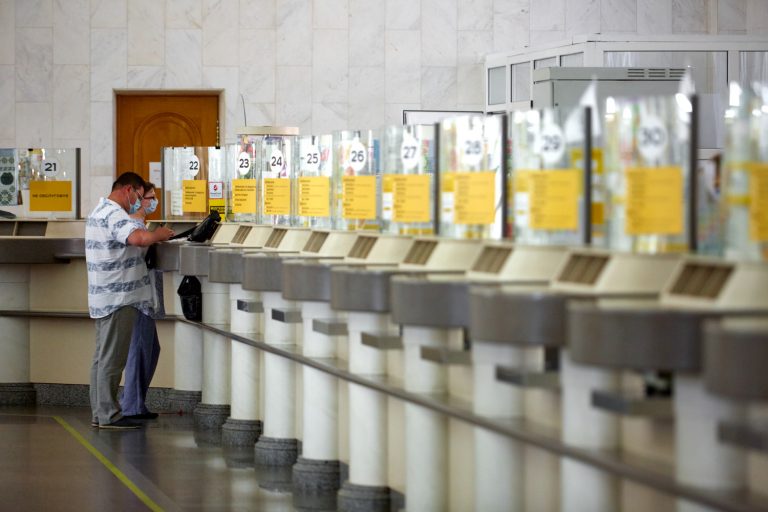
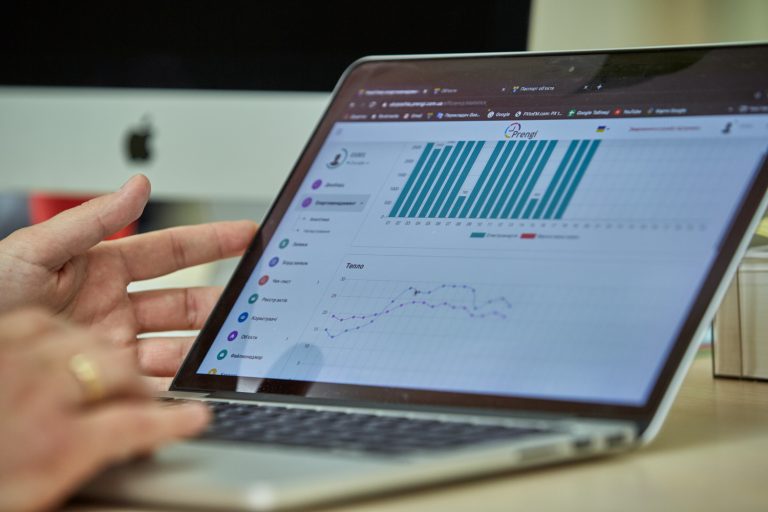
slideshow
Prengi combines all metre readings into a single graph, which makes it easier to identify when consumption goes over the norm by comparing the values with the previous periods.
From the company’s experience, Bohdan says, the reason for excessive energy consumption frequently is the absence of energy consumption culture. For instance, workers of offices or large enterprises can leave the heater switched on when they leave their workplace for the weekend or may not fix broken equipment for a long time.
— Human factor plays a huge role. No matter how energy efficient the building is, you can leave the lights on, turn on the gas and forget, open the windows and go home.
Thanks to its efficient energy use module, the service Prengi implements the culture of energy consumption.
— Imagine a situation when your object is located a thousand kilometres from you, and you receive information that there is an issue a month or a day after. How is it possible to analyse why it has happened and what the problem is with this object?
Monitoring metre readings and, consequently, energy consumption at the object using Prengi’s experience, enables saving from 10 to 15% of utility expenses.
In Bohdan Baiovskyi’s opinion, another factor of the excessive energy consumption today is the condition of public real estate: outdated equipment at the enterprises, facilities that have not been renovated or modernised in terms of utilities for decades, and so on. This makes the public sector different from commercial real estate:
— Commercial property is more modern — it is taken more care of. Actually, energy management is not so interesting for the commercial market as it is for the government one. Because the buildings are newer there and, accordingly, less is spent on efficient energy use. However, in the long run, businesses will pay more attention to energy management. They have become freer, more technological, and more reasonable. There is an understanding that by reselling and consuming we will not achieve anything.

Just before the COVID-19 quarantine started, the company V.A. Solutions Estonia offered new clients free setup and use of the online service Prengi.
— Any business that appeals to us for help nowadays will get free setup of the system as well as free use during the quarantine. As a rule, it is easy to automate 60-70% of the company’s business processes.
Bohdan Baiovskyi says that Prengi is already like his second child. He takes care of the program, worries about it, and is proud of its success from its start. When the product is useful, he gets immense satisfaction.
— Ukraine has to eventually become independent in terms of energy — this is the most important. You feel that it is yours and want your home to become better. Because it is something native to you, and not just a place where you live.

